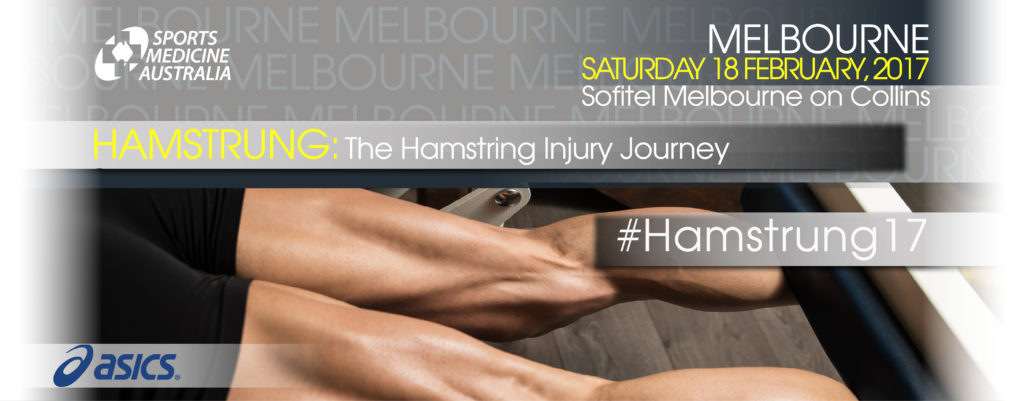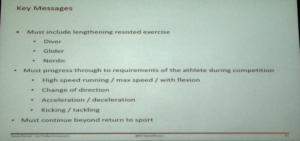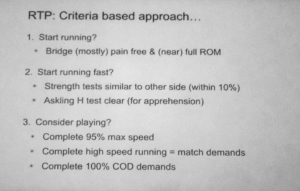By: @Kristian Lyng and @Mathias Brandhøj
After a great session on injury prevention, the #Hamstrung17 Conference went on to tackle the problem of diagnosing the injury, before explaining how to optimize rehabilitation. Read the infographic for our take home messages on managing hamstring injuries and how to optimize rehabilitation.
Take home messages on managing injuries and how to optimize rehabilitation
- Changes in load are associated with tendon problems, rehab should therefore focus on graded exposure without compression of the tendon
- Strength programmes should be balanced. Train the adaption you want. Speed is important – make your athletes run like they stole something before Return To Play (RTP)
- Rehabilitation programme should be based upon exercise tolerance, not pain.
Assessment, imaging and being critical
First speaker of the session was Dr. Chris Bradshaw talking about the importance of proper injury assessment.
We’ve used two of his slides on pitch side assessment that beautifully summarise his talk:
 |
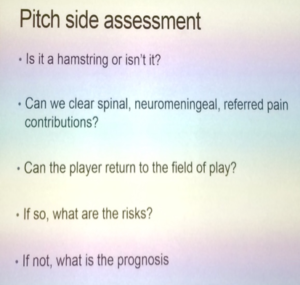 |
Slides from presentation by Dr. Chris Bradshaw.
Afterwards we learnt about radiological aspects from Dr. David Connell and Dr. Tom Entwisle. Key points – biarticular muscles are at higher risk of getting injured and that the long head of the Biceps Femoris is involved in 51% of distal musculotendinous junction (MTJ) injuries.
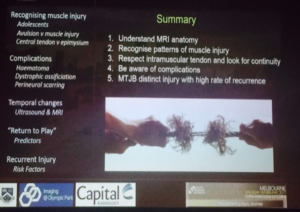 |
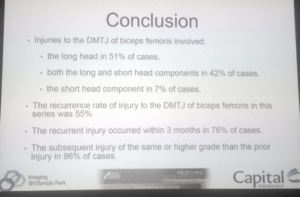 |
Slides from presentation by Dr. David Connell and Dr. Tom Entwisle
Dr. David Connell on the most important finding from a radiologist:
“The most important thing we can do as radiologist, is to see whether the intramuscular tendon in continuous or whether it’s disrupted. If it’s disrupted, it’s typically a layoff of 10 weeks or more, if it’s not disrupted it’s a more normal rehabilitation period of perhaps 3-4 weeks.”
Their clinical messages were:
- There is a high rate of recurrence with injuries involving the MTJ junction
- MRI can be useful to assist in the prognosis of hamstring injury
Karim Khan gave us a humorous speech about being critical of the treatments we choose for our patient focusing on PRP and how important it is to read evidence with caution
- Watch out for #MustardSperm and #Sh*tRCTs
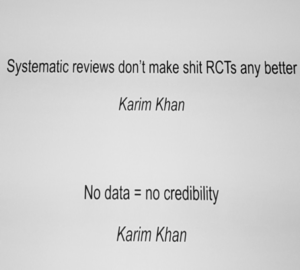 |
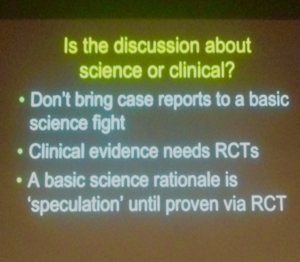 |
Slides from presentation by Dr. Karim Khan
He made it clear that there are no clinical trials that shows that PRP helps recovery in tendinopathy or muscle strains. He concluded:
“It is a form of voodoo treatment in contemporary sports medicine”
Management of injury and rehabilitation
@CPurdam lectured on the management of a hamstring tendon injury. He touched upon the importance of change in load:
“When diagnosing a potential tendon injury and if no change in load it is probably not a tendon problem.”
@CPurdam finished his session explaining that isometrics can be used as a tool to stimulate the motor drive to the muscle and how plyometrics should be introduced in a gradual transition phase.
Take home messages was:
- Tendon problems are associated with change in load
- Unload the acutely injured tendon
- Rehab tendons with graded exposure without compression to the tendon
- Use isometrics to normalize motor drive to muscle
- Monitor progress with provocative tests
@DrTaniaPizzari kicked off the “RTP and Failed Rehab” session with some practical examples on what to do in the different stages of rehabilitation and before RTP.
Slides on clinical implications:
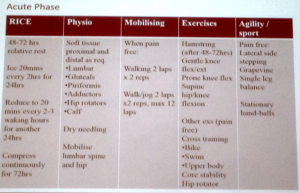 |
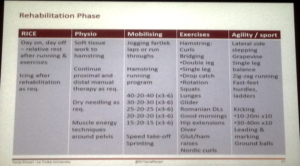 |
Slides from presentation by Dr. Tania Pizzari
Next up was Geelong Cats Head Physio @markyoungphysio who took us through the criteria of RTP after an hamstring injury. He provided us with tips on exercise selection and ideas to do criteria-based rehabilitation.
Take home messages from Mark Young:
- “Importance of a balanced strength program”
- “Make sure you athletes run fast; measure it and give them an opportunity to do it”
- “Have a shared decision model with the player, with the coaches and with the fitness staff.”
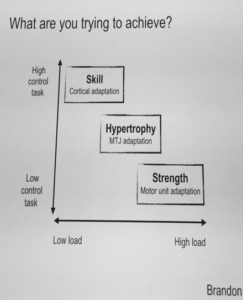 |
 |
Slides from presentation by Mark Young
Megan Davis spoke about the psychological aspects of injury & RTP. She reminded us of how important empowering and supporting the injured athlete is to a successful rehabilitation. Which complimented what Coach Andrew Collins (Insert hyperlink to blog1) said regarding knowing the athlete.
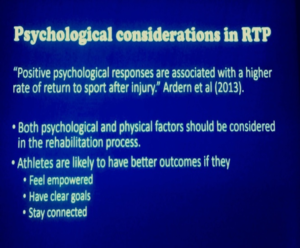 |
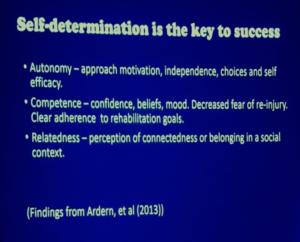 |
Slides from presentation by Megan Davis
The last session of the day was @JackHickey89 talking about why athletes may fail rehabilitation. In many ways this was a eye-opener and challenged some of our beliefs. According to his presentation our rehabilitation program should not solely be based on pain but rather on exercise tolerance. He proposed the idea of starting eccentric work early on in the rehabilitation process, building pain and exercise tolerance by various exercises.
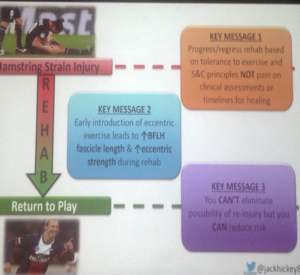 |
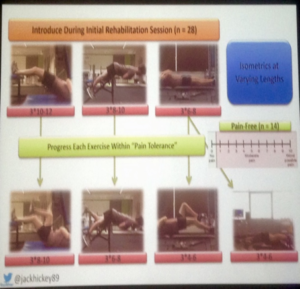 |
Slides from presentation by Jack Hickey
Much wiser on hamstring injuries and with a lot to reflect upon including point of views from coaches, psychologists, sports nutritionists and players, that wrapped up our injury journey at #Hamstrung17.
Thank you for reading.

